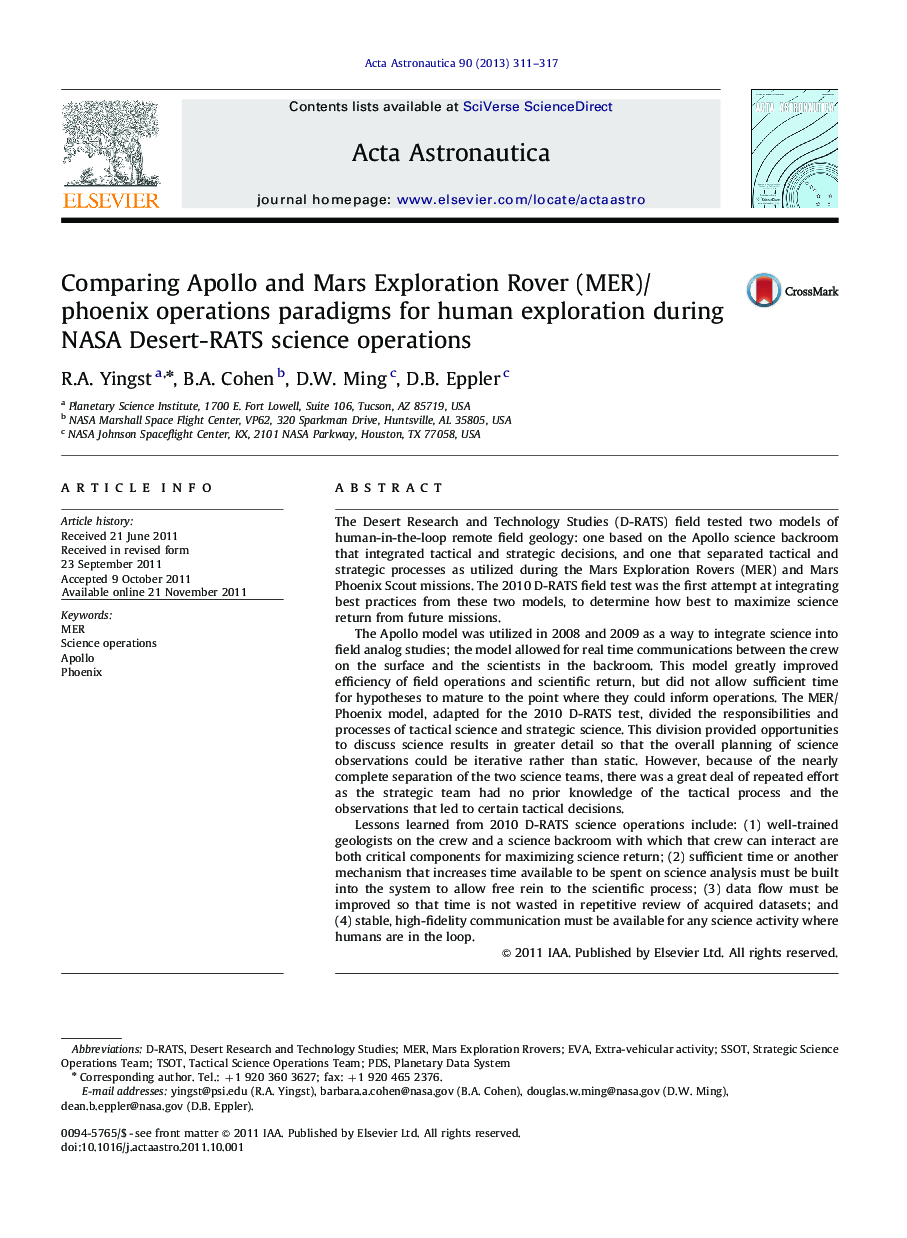| کد مقاله | کد نشریه | سال انتشار | مقاله انگلیسی | نسخه تمام متن |
|---|---|---|---|---|
| 1714949 | 1519960 | 2013 | 7 صفحه PDF | دانلود رایگان |

The Desert Research and Technology Studies (D-RATS) field tested two models of human-in-the-loop remote field geology: one based on the Apollo science backroom that integrated tactical and strategic decisions, and one that separated tactical and strategic processes as utilized during the Mars Exploration Rovers (MER) and Mars Phoenix Scout missions. The 2010 D-RATS field test was the first attempt at integrating best practices from these two models, to determine how best to maximize science return from future missions.The Apollo model was utilized in 2008 and 2009 as a way to integrate science into field analog studies; the model allowed for real time communications between the crew on the surface and the scientists in the backroom. This model greatly improved efficiency of field operations and scientific return, but did not allow sufficient time for hypotheses to mature to the point where they could inform operations. The MER/Phoenix model, adapted for the 2010 D-RATS test, divided the responsibilities and processes of tactical science and strategic science. This division provided opportunities to discuss science results in greater detail so that the overall planning of science observations could be iterative rather than static. However, because of the nearly complete separation of the two science teams, there was a great deal of repeated effort as the strategic team had no prior knowledge of the tactical process and the observations that led to certain tactical decisions.Lessons learned from 2010 D-RATS science operations include: (1) well-trained geologists on the crew and a science backroom with which that crew can interact are both critical components for maximizing science return; (2) sufficient time or another mechanism that increases time available to be spent on science analysis must be built into the system to allow free rein to the scientific process; (3) data flow must be improved so that time is not wasted in repetitive review of acquired datasets; and (4) stable, high-fidelity communication must be available for any science activity where humans are in the loop.
► The D-RATS 2010 field test blended Apollo and MER/Phoenix tactical and strategic processes.
► Geology-trained crew and a science backroom are critical for maximizing science return.
► Sufficient time must be built into the system to allow free rein to the scientific process.
► Data flow must be improved so that time is not wasted in repetitive review of acquired datasets.
► Stable, high-fidelity communication is required for any field science with humans in the loop.
Journal: Acta Astronautica - Volume 90, Issue 2, October 2013, Pages 311–317